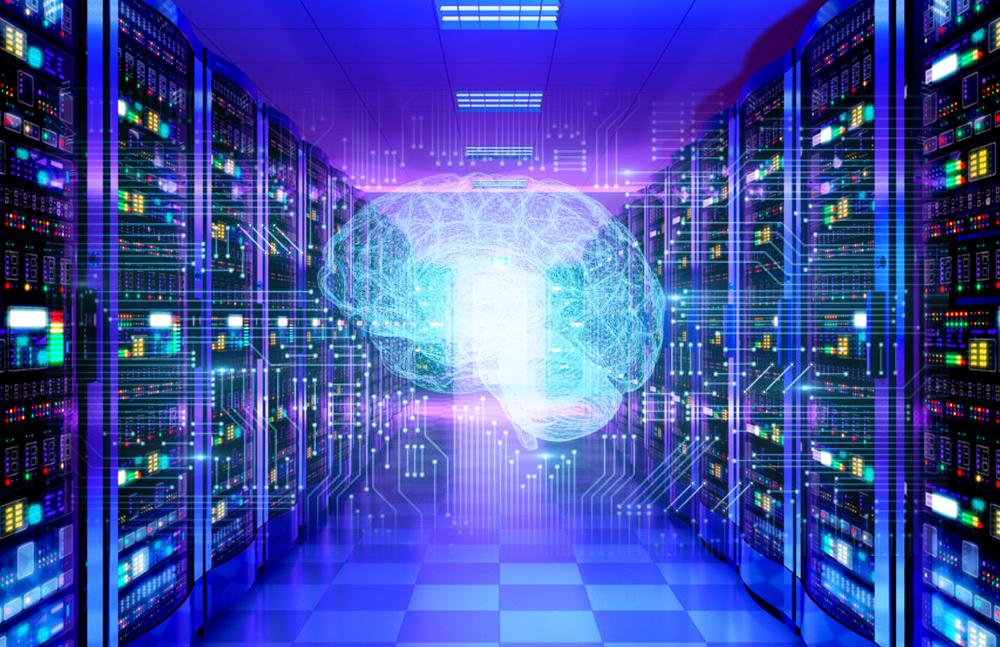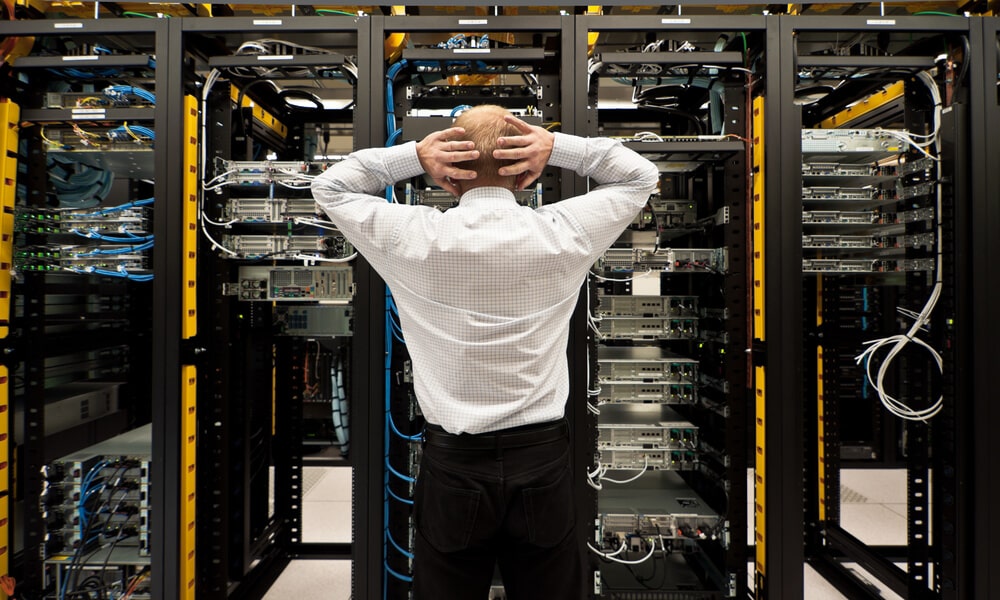If you haven’t heard the term ‘deep learning’ used already, it’s likely you will soon. Increasingly used to support businesses to improve their processes, deep learning has the capability to allow computers to learn independently, and undertake tasks with limited human supervision or intervention.
As you can imagine, the potential benefits for your business in terms of productivity and profitability could be game changing!
So how does ‘deep learning’ differ from the more widely-known concept of ‘machine learning’?
Essentially, deep learning takes data science to another level by utilising artificial neural networks designed to replicate the workings of the human brain. When processing data these networks extract complicated concepts and relationships, to identify patterns that can be used to develop accurate insights and predictions, informing automated decision-making.
By using multiple layers and progressively extracting higher-level features from raw inputs, concepts that are familiar to the human brain but traditionally foreign to computing technologies, can now be identified. These might include sounds, digits, letters or faces.
Just a few of the many examples of the deep learning framework in action include virtual assistants, face and voice recognition, medical image analysis, product recommendation engines, language translation, and the detection of tone, context and emotions during spoken interactions. It’s even this technology that provides driverless cars with their vision!
Obviously, to achieve any of the above a special kind of server is required. And as we all know, specialist hardware can often carry a hefty price tag. The good news is a deep learning server can be assembled at home, with relative ease, and by somebody with minimal experience of building powerful computing technologies.
Check out our tips below, to discover how an affordable server solution with limitless potential for business improvements could be right at your fingertips!
Component selection
When compiling your list of server components, first ensure you have a clear understanding of what you are hoping to achieve for your business by transitioning to a deep learning server. Power and budget are likely to be two key considerations, as well as ensuring chosen hardware is either unlikely to require an upgrade for a substantial period, or can be easily and affordably upgraded.
Thorough online research should guide you in the right direction when compiling your list. Products with lots of positive reviews tend to indicate the component in question has been thoroughly tested, and that how-to-guides and other online support are likely to be readily available.
Before committing and making a purchase, it’s a good idea to use one of the many reliable online part compatibility checkers for added reassurance. After all, the last thing you want is to spend your time assembling a relatively complex piece of equipment, only to discover one element does not work properly alongside another.
At a minimum, you’ll need the following high-performance and affordable hardware elements to build your deep learning server:
Motherboard – Think of this as the backbone that holds all elements of your server together, as well the mechanism that enables them all to communicate. Effective interactions between components is an absolute must if your server is to function well.
When selecting your motherboard, paying attention to ease of upgrade is particularly crucial. An upgradable motherboard will enable you to install an additional GPU (see below) if you need a boost in performance at a later time. Similarly, you should make sure it contains enough RAM slots (also see below!) for future upgrades.
Graphics processing unit (GPU) – A GPU is a specific type of processor integrated into a graphics card, designed to accelerate graphic rendering. The GPU is capable of processing large quantities of data simultaneously, making it particularly suitable for deep learning applications.
If you have budgetary concerns, this is one component on which you should not compromise. The right GPU version is worth every penny, especially when you consider it is the element that will train your deep learning models. The more powerful the GPU, the faster your server will process massive datasets.
Central processing unit (CPU) & CPU cooler – A CPU or ‘processor’ forms a key element of any digital computer system, but is even more vital for deep learning. It comprises various pieces of hardware that work in unison to deliver information, enabling your server to perform all the tasks you ask it to complete.
While the GPU trains the neural networks in your server, the CPU is responsible for vital operations including data preparation. So again, you’ll want to go for an option that can offer high speeds if you want to enjoy the most effective deep learning outcomes.
Random Access Memory (RAM) – The RAM component of your server provides a short-term memory storage space, and its ability to operate at high speed means it can be used to process information immediately.
Power supply unit (PSU) – A PSU converts mains power to a lower voltage. This regulation is important to ensure the power entering your server is appropriate for all internal components, and will not risk causing any damage.
Alongside the hardware elements described above, another essential component of your server will be your operating system (OS). There are lots to choose from, each with their own distinct advantages and disadvantages. Once again, effective research when choosing your OS will be critical, particularly as it is this system that will equip your new server with the capabilities needed to perform deep learning functions.
… and although it probably goes without saying, you must always make sure you purchase your components from reputable, trusted vendors.
Assembly
If you’re relishing the prospect of the challenge presented by building your own deep learning server, feel free to skip this paragraph! However, if you’re not feeling so confident there are many computer stores that will happily perform the assembly on your behalf for a relatively minor fee.
Prior to commencing this process, make sure you take the time to comprehensively read each component’s instruction manual. You’ve researched, sourced and paid for the parts, so it’s important that you get this next stage right to avoid doubling up on any of your hard work or spending.
Install the CPU – This probably represents not only the first but also the most nerve-wracking aspect of assembling your server. A series of specific steps must be completed in the correct order, while one or two commonly made mistakes can derail the entire piece of equipment. To avoid disaster, make sure you watch an online tutorial so that you can easily visualise the process.
Install the RAM – Thankfully, this is a much easier job. Simply slide your memory stick/s into the appropriate slot/s on the motherboard. Your motherboard’s manual should contain extra information about the specific slots to use, in relation to the number of memory sticks you have chosen to install.
Install the OS – Install your deep learning OS using the USB provided by the vendor. For a regular computer user, this should be a fairly straightforward step in the process, with plenty of guidance available online. And remember – restart your system once this particular task has been completed.
Install the GPU – Another easy step, simply slide your GPU/s into the appropriate slot/s on the motherboard.
Once the above has all been completed, it’s time to install the PSU into its own allotted slot, then plug everything in, and start using your new deep learning server, with the sense of pride that comes with knowing you built it yourself!
It’s important to note that everybody processes information differently. Some people work better when following written instructions, while others learn by discussing or doing.
Then there are visual people who receive, retain and comprehend information best when given visual examples. For that reason, and particularly for the uninitiated, we’d always recommend watching (and even following along with!) one of the many online instruction videos focused on this exact topic. Seeing somebody else follow the same steps can instil you with extra confidence as you undertake an unfamiliar task.
And there you have it! A beginners guide to building your very own deep learning server, with all the capabilities necessary to employ AI and drive your business towards a successful future.







